DOSSIER
BMW

BMW R 1300GS
The GS concept was born 43 years ago when in 1980 BMW proposed its first trail model with the term GS from the German Gëlande (dirt) and Strasse (street/asphalt). Since then, the acronym GS has become a myth, a legend and even a dogma of faith among the more than one million GS motorcycles sold by the Munich brand. It is not easy to get to that point of being a “myth” and year after year occupying the best-seller positions not only in the specific trail market, but also in general terms in the motorcycle market.
DOMINANT...But it was clear that the trail market has positioned itself as the current benchmark and the offer has grown enormously, much greater in number of brands as well as models, and all of them always following the idea of the GS and having at German model as the rival to beat and to take measurements, and to invent its own path to try to surpass the GS by following its own.
BMW is celebrating its centenary as the birth of a motorcycle brand since it launched the first BMW that carried its logo and name on the tank. And it is no coincidence that the GS 1300 was launched this year, as the 100th anniversary was to be celebrated in style. That is why it presents one of the most anticipated motorcycles in recent years, the successor to the R 1250 series, which has its main bastion in the GS.
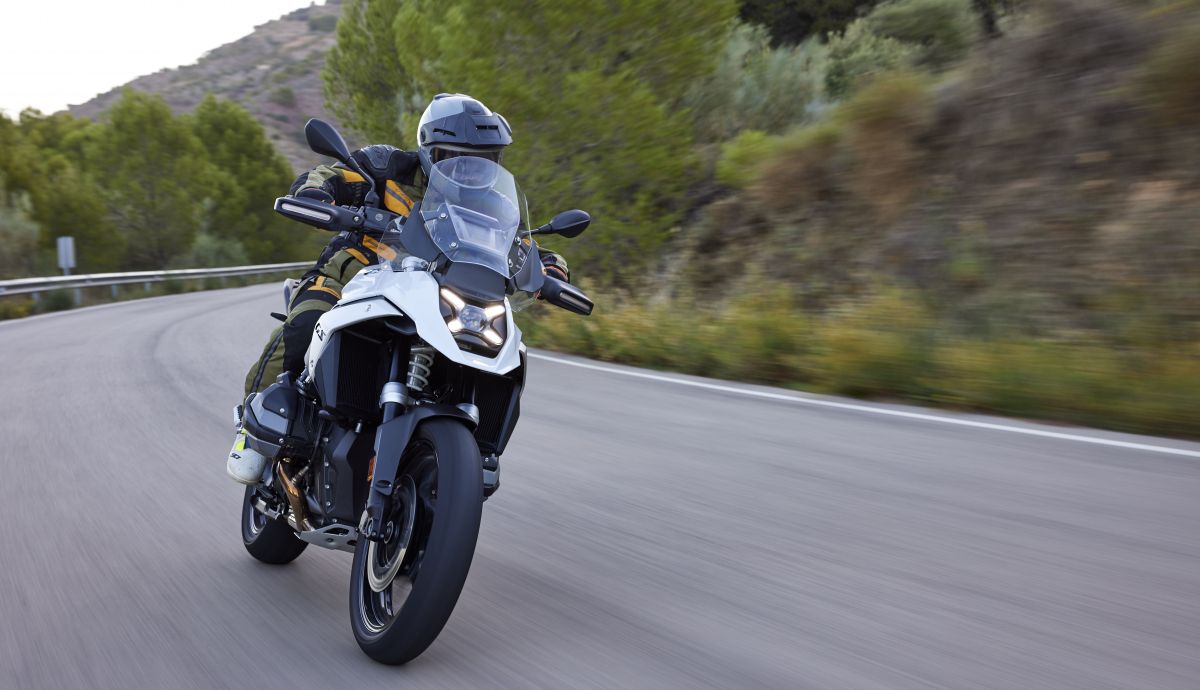
The truth is that since 2016 BMW has been working on creating the new GS, taking advantage of the moment to do much more than update the bike. At BMW, it has sought to renew the spirit of the GS, to go from “conservative” motorcycles that are not too seductive to look at, to eye-catching frames, even for a younger audience. Break with all the prejudices about the GS of being inconspicuous, dull, heavy, big... Remove all the “buts” that the numerous “hatters” of the model kept repeating. To make a GS more emotional, both in its design and in its behavior.
A more powerful, lighter, more versatile and much more impressive motorcycle. Its engineers have not simply tried to renew what existed, but have created a new motorcycle that has both a new engine and a new chassis. Seeking to catch the competition with a changed pace, since the direction that the GS was taking has now changed its orientation, maintaining the spirit but with a very different direction.
A sportier motorcycle, a description that until now was not applied to the GS, narrower, lighter, more comprehensive and open to customers who had never thought about a GS.
Preserving the particular image of the large GS, the new R 1300 GS has a new body in which its new Matrix Led optics stand out. Ergonomics have been taken care of with the possibility of changing the height of the handlebars with a riser, various types of handlebars, up to four seat variants and three footrest variants, optional.
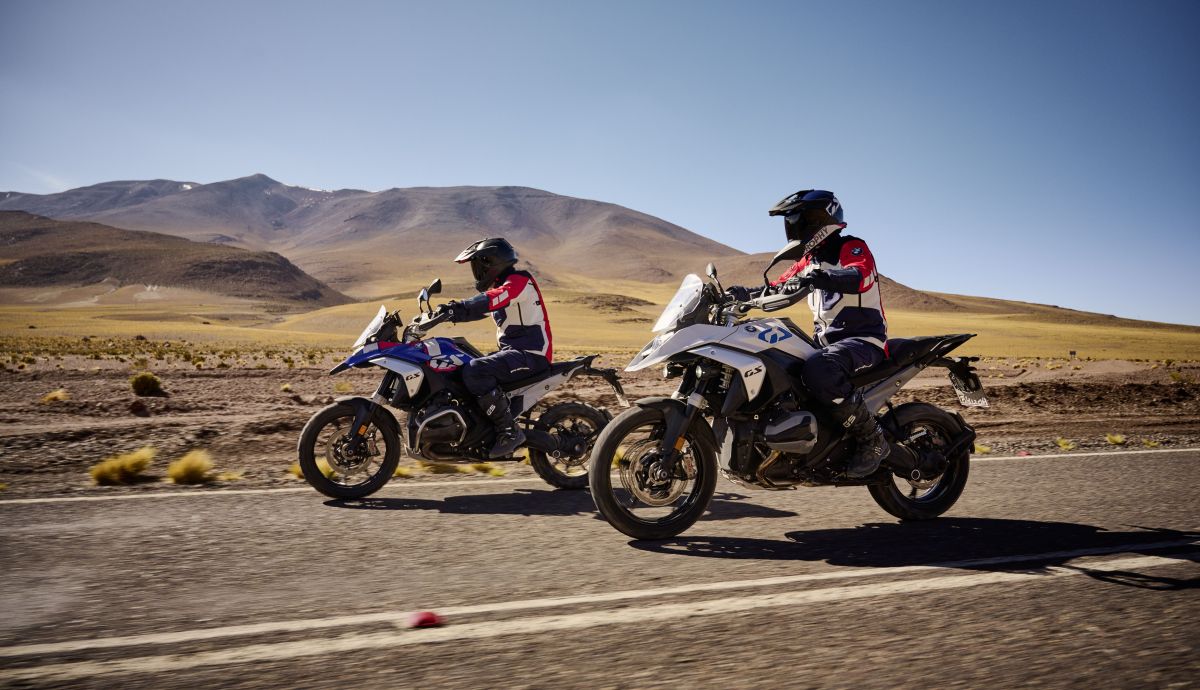
Each one comes with different and unique body colors, one thing I don't like is that in each version of the GS 1300 there are no more color options to choose from, limiting the customer in this sense.
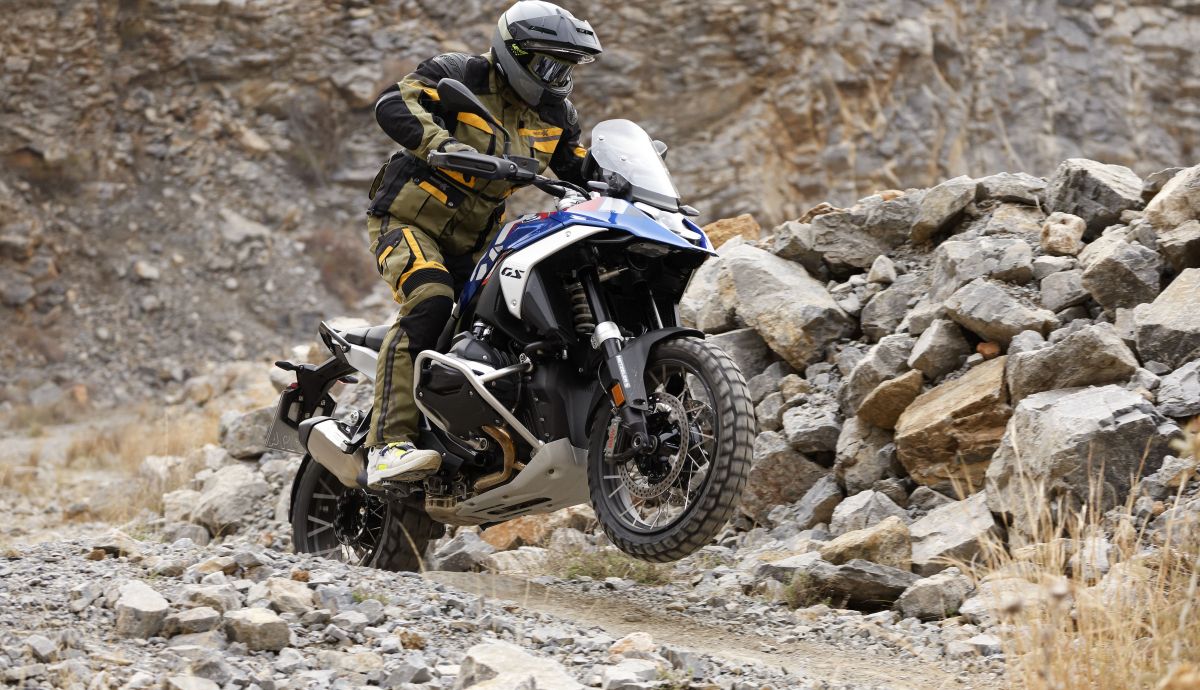
There are four pre-configured equipment packages as an option, although, needless to say, the accessories that the customer wants can be purchased individually. Touring Package (€801): Central locking with keyless system, handlebar extension, suitcase support, navigation pre-installation and chrome exhaust manifold; Comfort package (€541): Windshield with electronic adjustment, center stand, comfort seat and footpegs for the passenger, and luggage rack with handles for the passenger; Dynamic Package (€1,816): Quickshifter Pro, DSA electronic suspension regulation system, Pro driving modes and sports brakes; Innovation Package (€1,257): Radar system and Pro headlight.
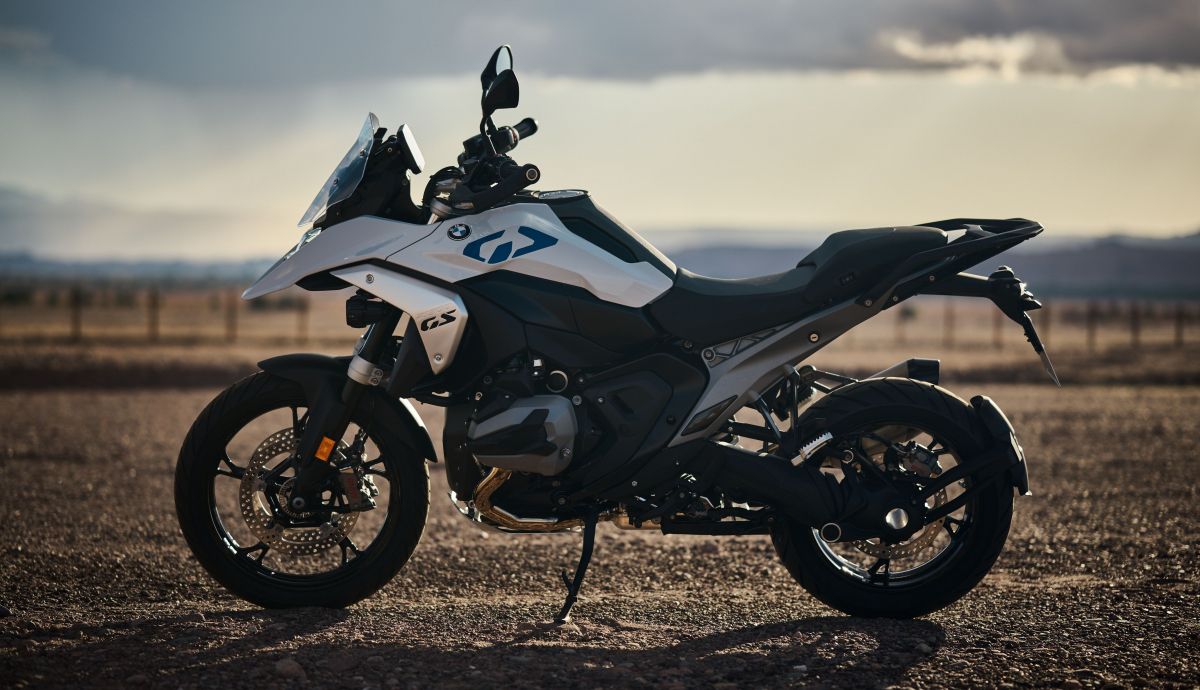
The maximum speed is the same at 9,000 rpm, but the torque available throughout the entire rev range has been increased, especially in the middle zone, between 3,600 and 7,800 rpm there is always more than 130 Nm available. Four-valve heads have a higher compression ratio, 13.3:1 versus 12.5:1. It has a larger diameter in both the intake valves, which go from 40 mm to 44 mm, and the exhaust valves, 35.6 mm instead of 34 mm. The two camshafts are driven by chains, with the right cylinder chain in front and the left cylinder chain behind.
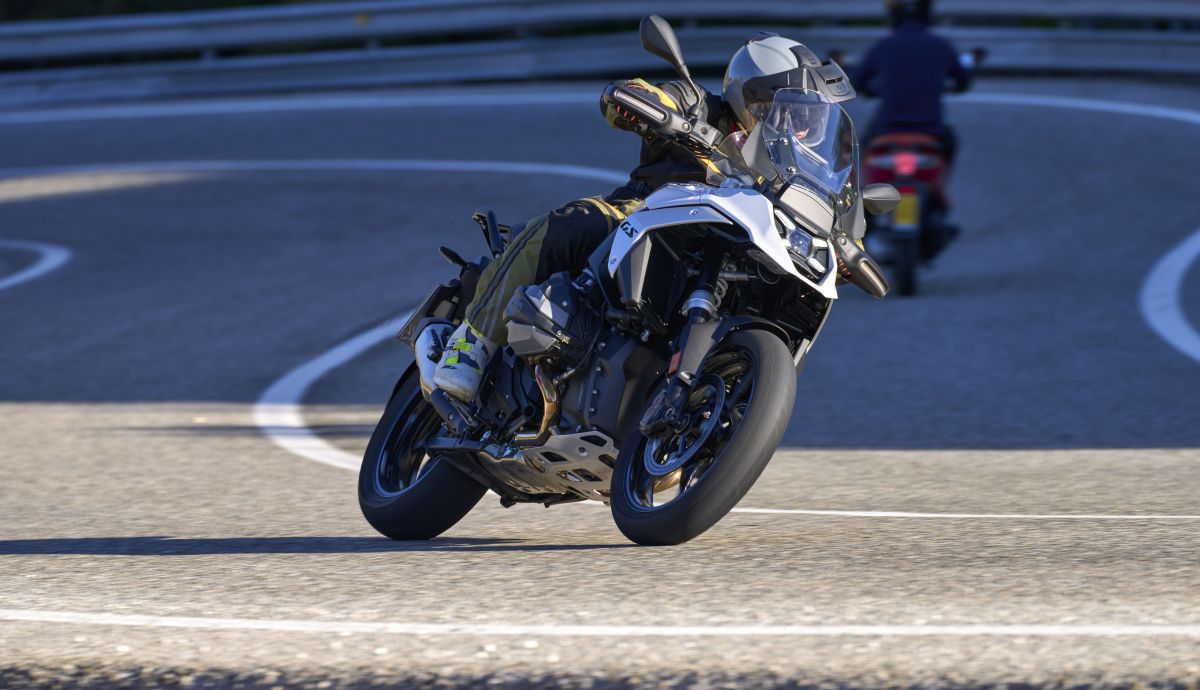
BELOW GEARBOX...A relevant modification, perhaps the most important, is the new design of the crankcase and transmission, since the gearbox has been moved from the back of the engine to be located below. In this way, it is possible to reduce the length of the engine, and also concentrate the weight even more, which is moved forward. With this new design, the axles are shorter and the crankcase smaller, which has allowed its weight to be reduced by 3.9 kg, and 6.5 kilos less in the transmission train. The clutch is still located in front of the engine and is a multi-disc oil clutch.
The shift output to the secondary transmission is carried out with two spur gears, one of them with the integrated transmission damper. To increase the precision of the changes, a sensor has been installed that has a torsion magnet, to improve the operation of the shift assistant, which is optional.
The secondary cardan transmission with the Paralever system is maintained, but it has been modified. The engine crosshead is now positioned further forward, allowing for a longer swingarm length, installed at a lower angle. This new version called Evo Paralever involves a more rigid connection to achieve greater traction, in addition to changes in the axle to remove the wheel from the swingarm more quickly.
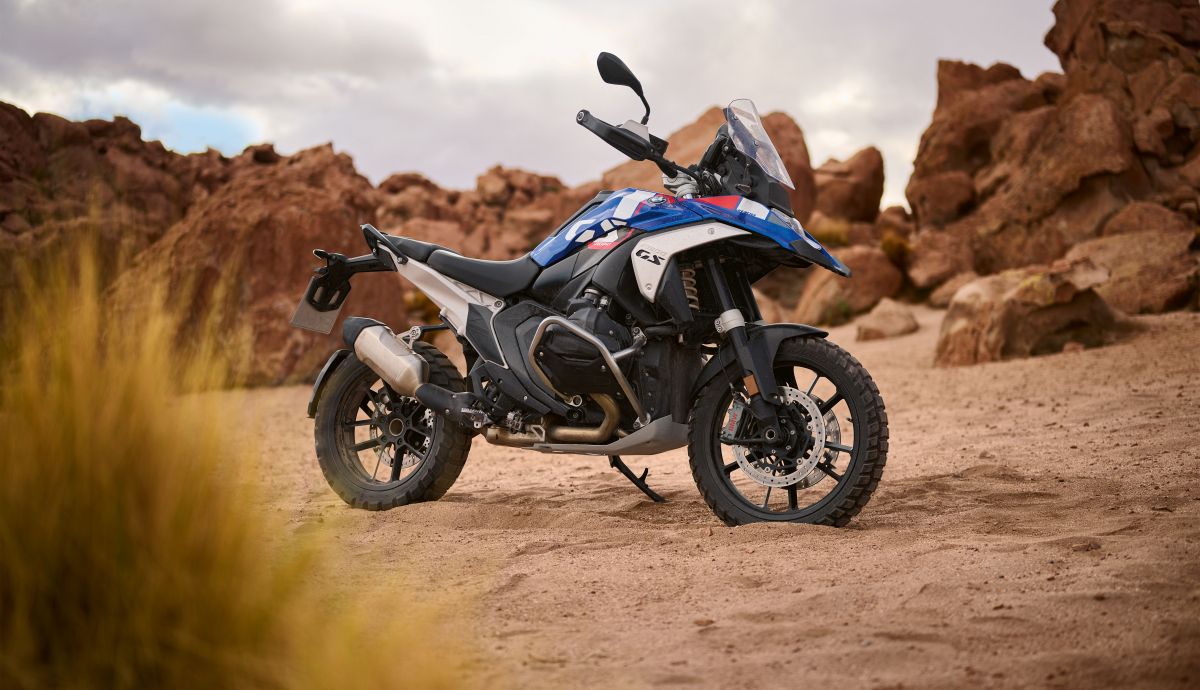
The subframe is now a die-cast aluminum piece instead of the steel trellis frame and is bolted to the rear area of the main frame, which includes the upper rear shock mount, anchored to the single-sided swingarm. The weight of is 237 kg. With the 19 l tank full, 12 kg less than the previous model, the first version of the GS that does not increase the weight of the previous one.
As for the Telelever front suspension system, now the upper fork tubes are rigidly anchored to the steering plate, and the connection of the handlebar bridge with the upper bridge of the fork are joined by a stainless steel plate that It forms the flexible element of the assembly and is capable of compensating for the tilting movement of the fork and, at the same time, transmitting steering forces without elastic filters. The suspensions have a travel of 190 mm at the front and 200 mm at the rear.
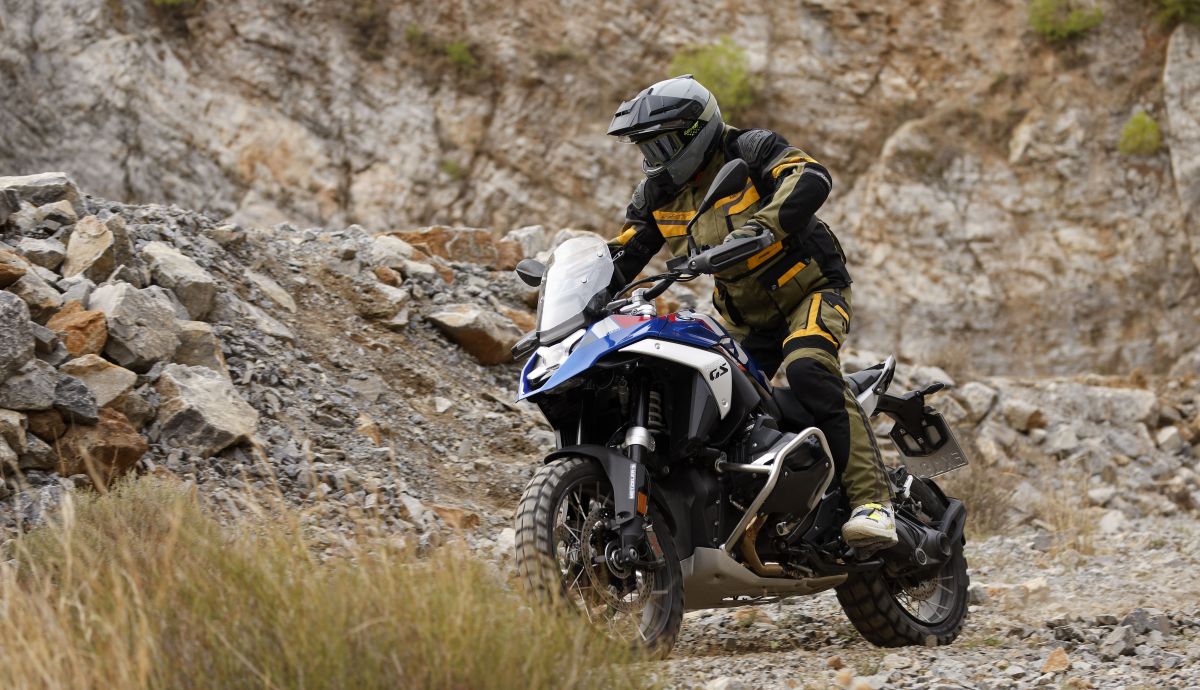
It also allows you to have a new adaptive height control and sport driving mode as an option. When stopped and at low speed, the height of the motorcycle goes from 850 mm to 820 mm quickly and almost imperceptibly.
The adaptive height control can be customized by choosing between automatic or permanent lowering, and keeping the bike permanently high. It also has a central easel with a folding and extendable base for easy use. The sports suspension is focused primarily on off-road use and is optional equipment.
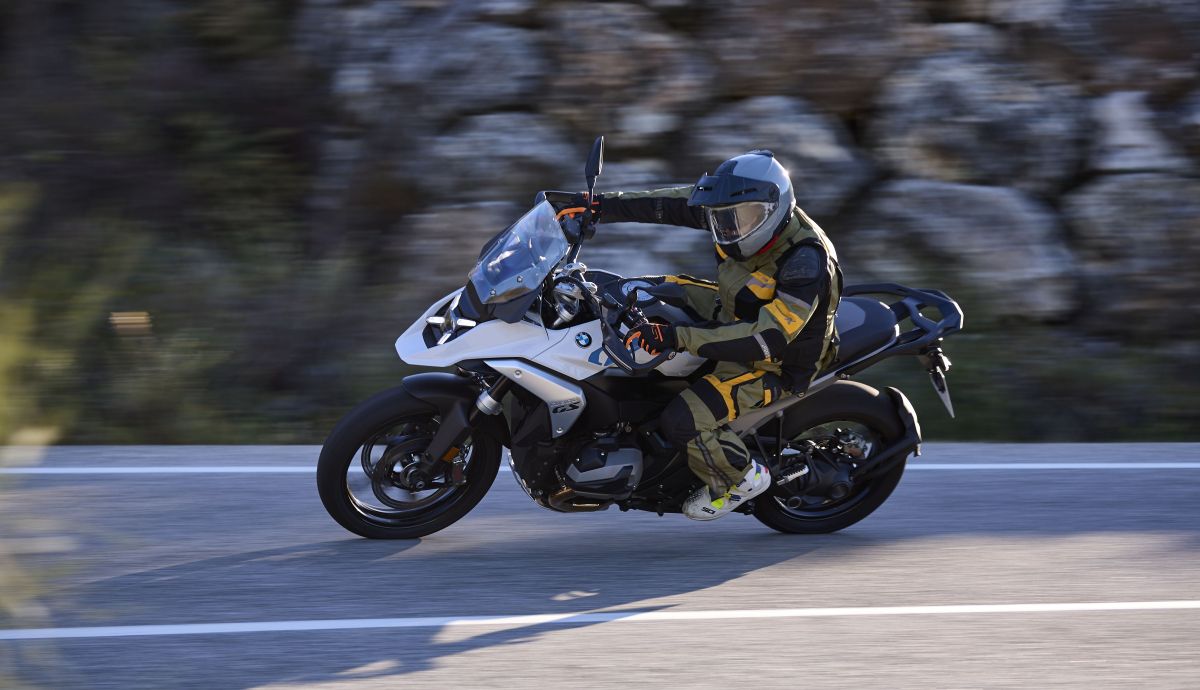
POWERFUL...BMW's staging for this first contact has taken us to the province of Malaga. Sensational environment that many of you know, for its spectacular roads (Mijas, Ronda, Alhaurín, Yunquera, El Burgo...) very good for testing a motorcycle. Also including a field environment, it is an enduro paradise, to ride with the GS Trophy.
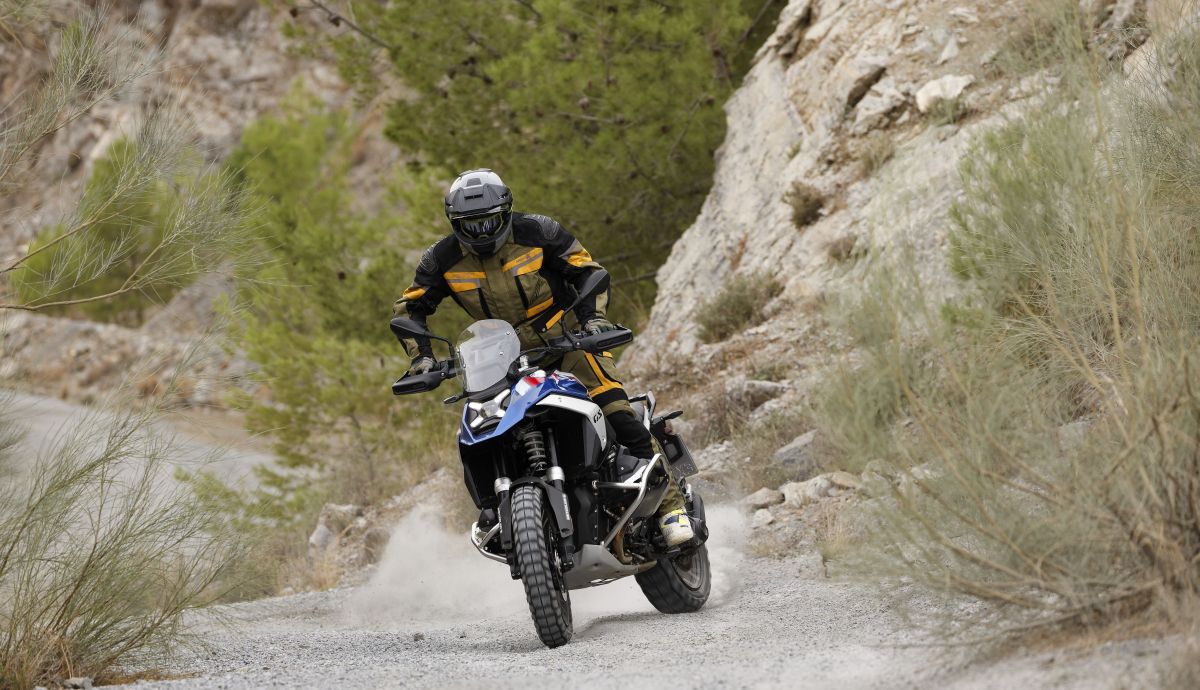
The change in the image, which initially may not be liked but which over time becomes spectacular, reflects what the new motorcycle is like. In nature it wins more than in the photos, especially because of the headlight theme - the motorcycle's hallmark, especially when you see it rolling from behind - and the whole set is more modern, an image of a smaller motorcycle, which probably The most “classic” ones, at first cause rejection, but then end up convincing.
The new chassis and subframe greatly lighten the image of the whole and make it feel like the GS has lost much more weight than the declared 12 kilos – they couldn't tell us in comparison to which version and if this reduction was the same for all versions. Weight reduction, by the way, achieved with decisions such as mounting the lighter battery (2.5 kg less) with what, really, in terms of weight of the redesigned vital parts it refers to 10 kilos.
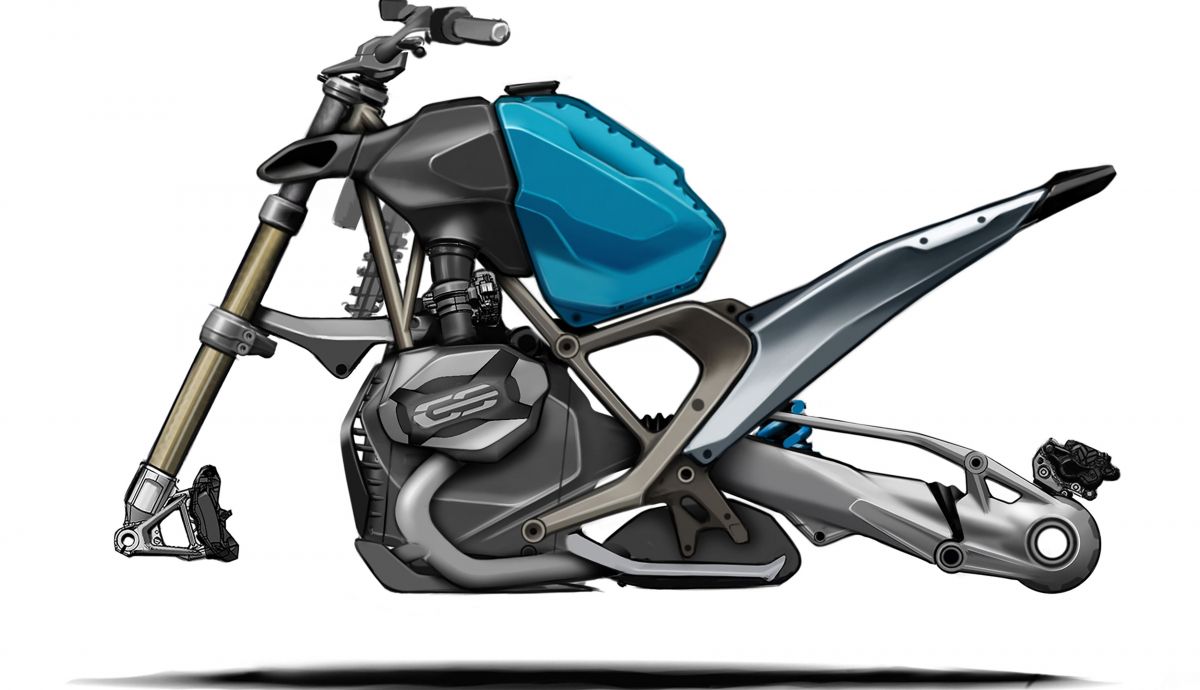
MAXIMUM COMFORT... Tremendously efficient, fun, sporty, in the new GS you reach the ground very well, the seat is lower, offers great ergonomics, and has great riding comfort. Tallers will miss a higher seat height – they will have to ride one of the several higher ones offered. Larger riders may also miss greater aerodynamic protection, as the 1250 had.
At the controls I really like the position, although the standard seat of the “white” GS leaves my buttocks a little uncomfortable at the end of the day and I found the one on the GS Trophy, with a long bench, more comfortable.
I like the piece of rubber that now covers the tank and that gives more grip to the legs. The stock footpegs seem a little “cheap” to me and their image is not quite GS, although it provides good foot support – and there are also different types of footpegs as an option to gain surface area, comfort or off-road use.
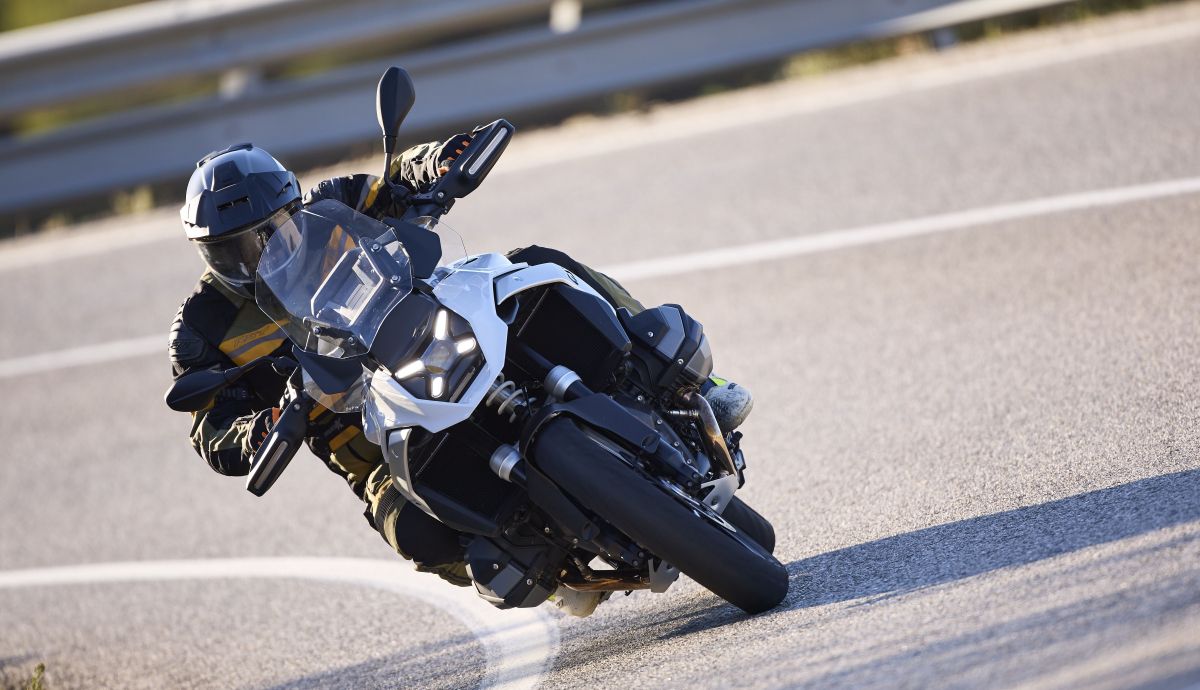
At the controls, visibility is good and the instrumentation looks very good, both in terms of position and brightness of the screen – it is only when the sun shines very overhead that some visibility is lost. The pineapple button is a great success, allowing us quick access to the functions that are most commonly used.
It is very appreciated to have a direct “route” to the functions that are most used and modified while driving (grips/heated seat, suspension, traction control, electric screen height, AAC proximity control...). By pressing the button on the left control panel for that menu we enter the screen that makes life easier in its use and in which we select what we want to regulate with the roulette wheel and confirm with the button.
POWERFUL ENGINE...The engine is very powerful, “fireworks” with a great thrust of 145 HP and tremendously solid torque. It is an athletic engine that accelerates forcefully and allows us to ride at the speed we want without stretching the gait, with sensational elasticity and a lot of recovery capacity.

This engine has not changed its sound much, a hallmark of the GS and all the BMWs that have this mechanism. The engine is actually a “boxer” gene, although both the size and shape of the silencer have changed, and even with the new dual-exit Akrapovic, both the image and the sound are enhanced.
The big surprise is the behavior of the chassis and the Telelever. The bike rides very well at the front, transmits more information than before and provides spectacular confidence when riding on the road. The improvement in the Telelever in terms of feel is clearly appreciated and not only that, the GS has gained agility in changing direction and on mountain roads it even feels agile.
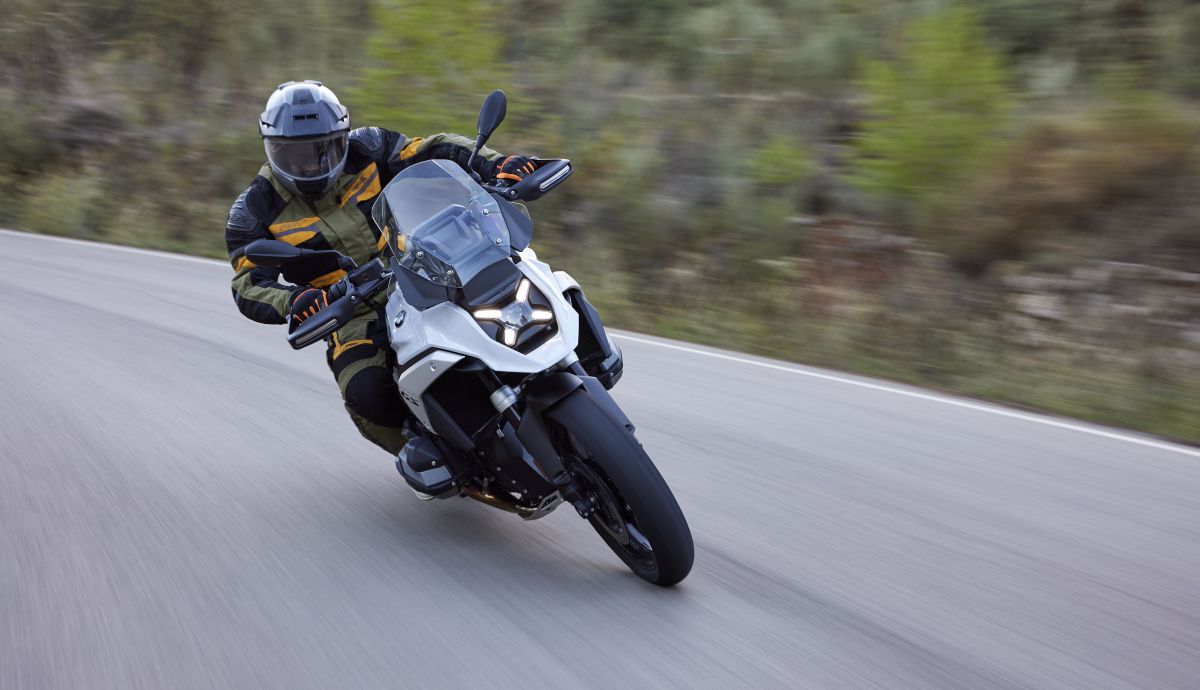
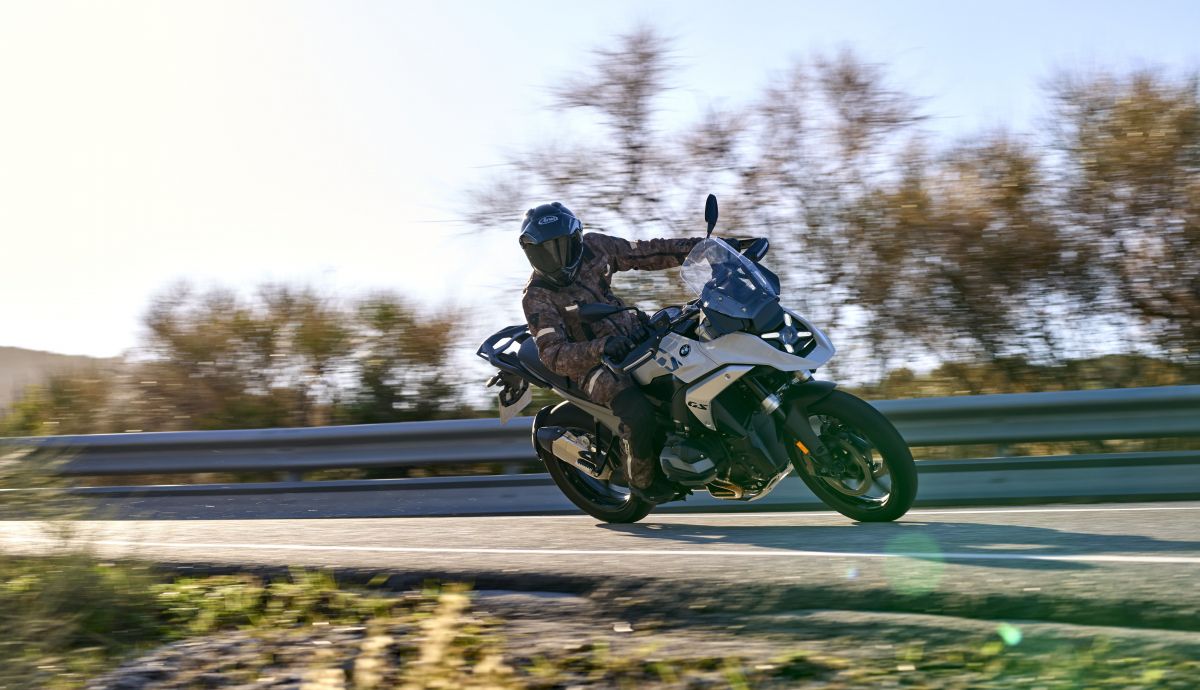
Price: €21,290 (standard version)
Engine>>>Type: 2 cyl. boxer. Liquid refrigeration.; Distribution: DOHC 8V; Bore x Stroke: 106.5mm x 73mm; Displacement: 1,300 cc; Compression: 13.3:1; Max power dec.: 107 kW (145 HP) at 7,750 rpm; Max torque dec.: 143 Nm at 6,250 rpm; Power: 2 injectors. 52 mm nozzles; Driving modes: 4; Electronic aids: TC, AC, DC, AC, DC; Acc.; Secondary transmission: Cardan; Gear: 6 ratios;
Chassis>>>Type: Steel sheet with supporting motor; Front/rear suspension: BMW Telelever EVO/BMW Paralever EVO II; Front/rear brake: 2 310 mm discs. 4-piston calipers, radial mounting/285 mm disc; ABS type/ Disconnection: In curve / Yes; Wheels: 120/70-19" / 170/60-17"; Tank capacity: 19 liters; Wheelbase: 1,518 mm; Seat height: 850 mm; Weight: 237 kg. (dry).
Reporting: Santi Ayala

Nenhum comentário:
Postar um comentário